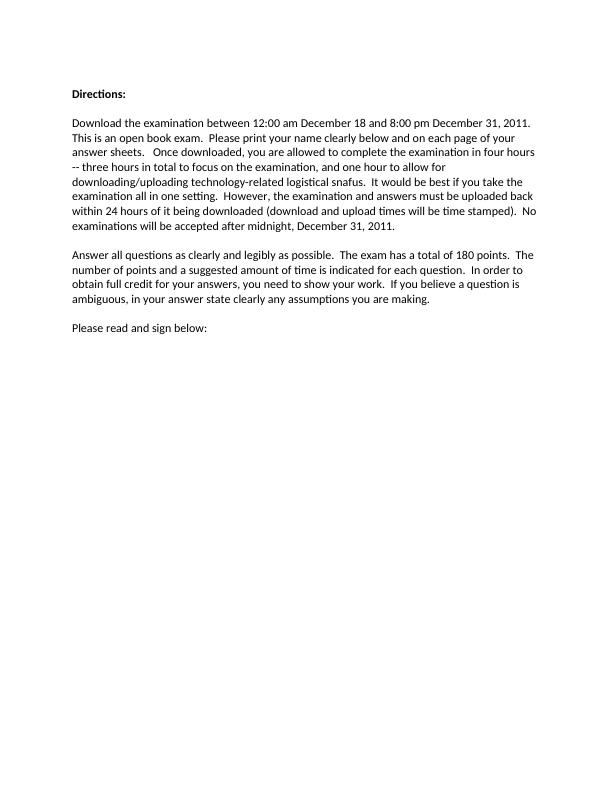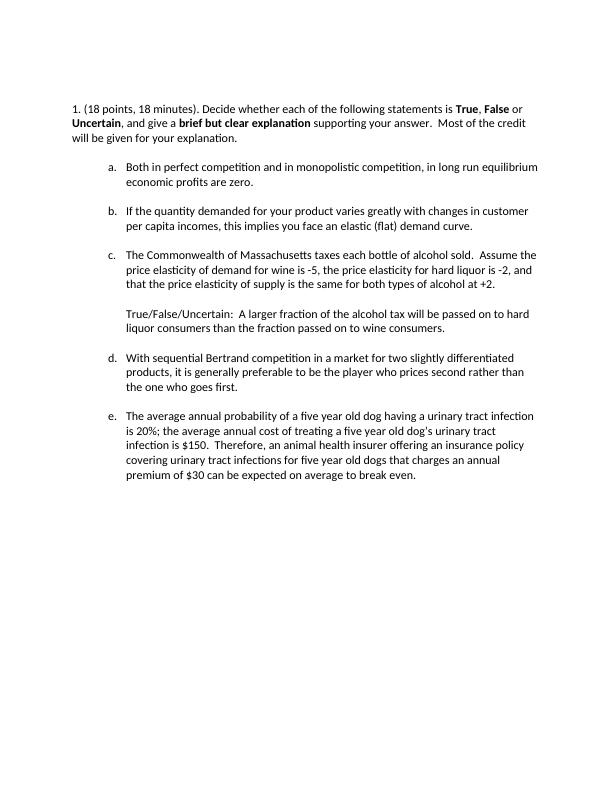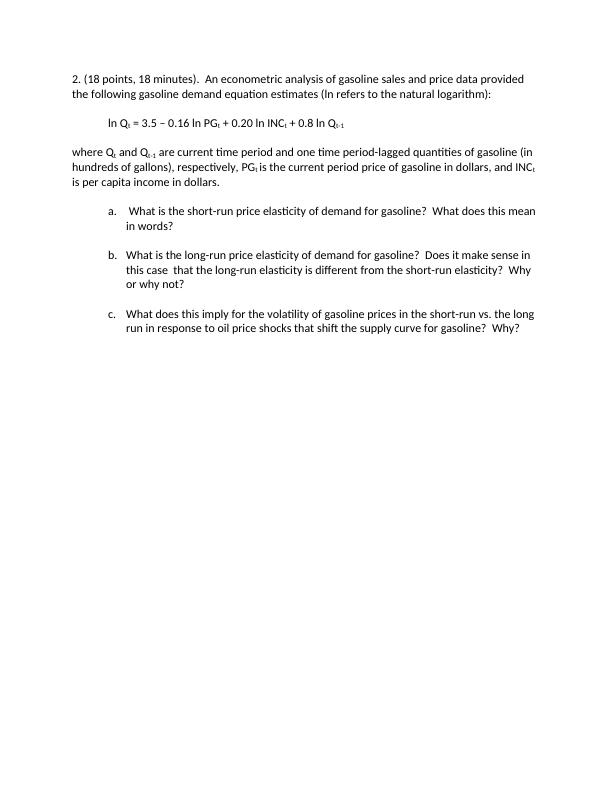Ask a question from expert
Microeconomics Exam: Questions and Answers
10 Pages2152 Words309 Views
Added on 2019-09-16
About This Document
This is a microeconomics exam with questions and answers covering various topics like perfect competition, monopolistic competition, econometric analysis, gasoline demand, toy manufacturing, market equilibrium, monopolist pricing, airline industry, and more. The exam is open book and has a total of 180 points. The exam can be completed in four hours, and the answers must be uploaded within 24 hours of downloading.
Microeconomics Exam: Questions and Answers
Added on 2019-09-16
BookmarkShareRelated Documents
End of preview
Want to access all the pages? Upload your documents or become a member.


